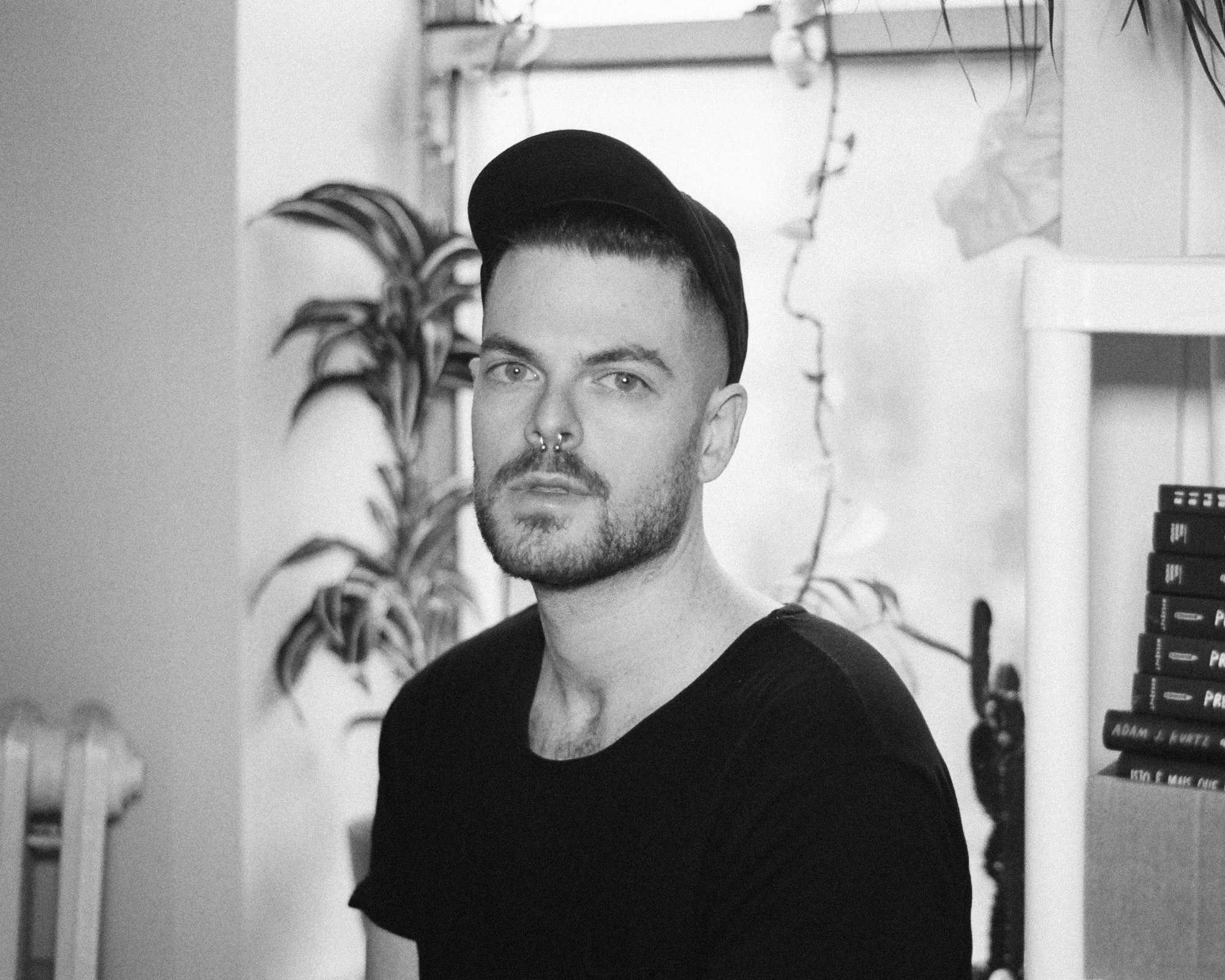
- Interview by Ryan Essmaker February 27, 2018
- Photography by Felipe Duque
Adam J. Kurtz
- artist
- author
- designer
Adam J. Kurtz has been making, commodifying, and promoting what he makes since he was just a teenager using the internet to connect and share with community. Here, the Brooklyn-based artist and author reflects on his self-made creative path and process; from setting up shop at church-basement emo shows in the Baltimore suburbs, to the novelty t-shirt that saved him during a period of unemployment, writing his first book of essays, and the accidental mantra that’s made all the difference in his outlook.
You refer to yourself as an artist and an author, but you do a lot of different things. Can you describe the creative path you took to get where you’re at now, starting with your youth in Toronto? I was a teenager, alone, on the internet. (laughing) I didn’t have a ton of friends. I moved from Toronto to the States when I went to boarding school for high school, and when I went to college I didn’t have the kind of friendships that crossed borders. I sort of left Canada behind. So for me, the internet was my place to connect and share and make things. I taught myself HTML in the late ’90s, and I launched my first website—a Pokémon fan site—in 1999. I coded it in Notepad++, and did all of the design in MS Paint. I got really good at hacking shit together while running that site. It was my first chance to make something from nothing, which is what code is. It’s magical.
In college, I studied graphic design and picked up more skills, I said goodbye to Paint Shop Pro 8.0, and learned Photoshop and Illustrator and InDesign. It was a full education: learning how to do stuff for web, and also things like print production. And I emerged from college with a pretty decent grasp on the internet. Tumblr had recently launched in 2007, so I joined. I had come to that through Myspace and LiveJournal, and was used to commodifying bits of myself, and promoting and sharing things. When I was on LiveJournal, I sold little buttons, and designed and made pins and plastic necklaces for scenesters in the emo days. I called it LOL Hipsterrr, with three r’s.
Of course! (laughing) It was super literal and uncomfortably accurate. I was also early to Shopify, which was free when it launched, and I did things like in-person booths at church-basement emo shows in the Baltimore suburbs.
It kind of feels like I’ve been variations of exactly who I am now, my entire life. It’s been a continued growth, with a variety of opportunities along the way. I think there are so many moments where you’re presented with an opportunity, and you can either do something big, or something even bigger. You get what you ask for, and what you make of things. My whole career has been just that; making the most with what I have, and always trying to make more.
You mentioned Baltimore. Is that where you first moved from Toronto? My family first moved from Toronto to the DC suburbs when I was 14. My dad’s side of the family is all in Toronto, and my mom’s side is in DC.
Before my family left, I had been accepted to a Jewish boarding school in Wisconsin. I was there for three years, and would come home during the summer. But by the time I was done with boarding school, it was like, “Oh! We live in America now.” (laughing) I had left my Canadian friends behind, and my boarding school friends were from all over the country. I think that’s why the internet, and my friendships there, mattered so much to me.
Then I went to college in Baltimore, and stayed there for a couple years afterward. In a way, Baltimore was really my first crack at making lifelong friendships. Those friends from that period of life are the ones that I still have today.
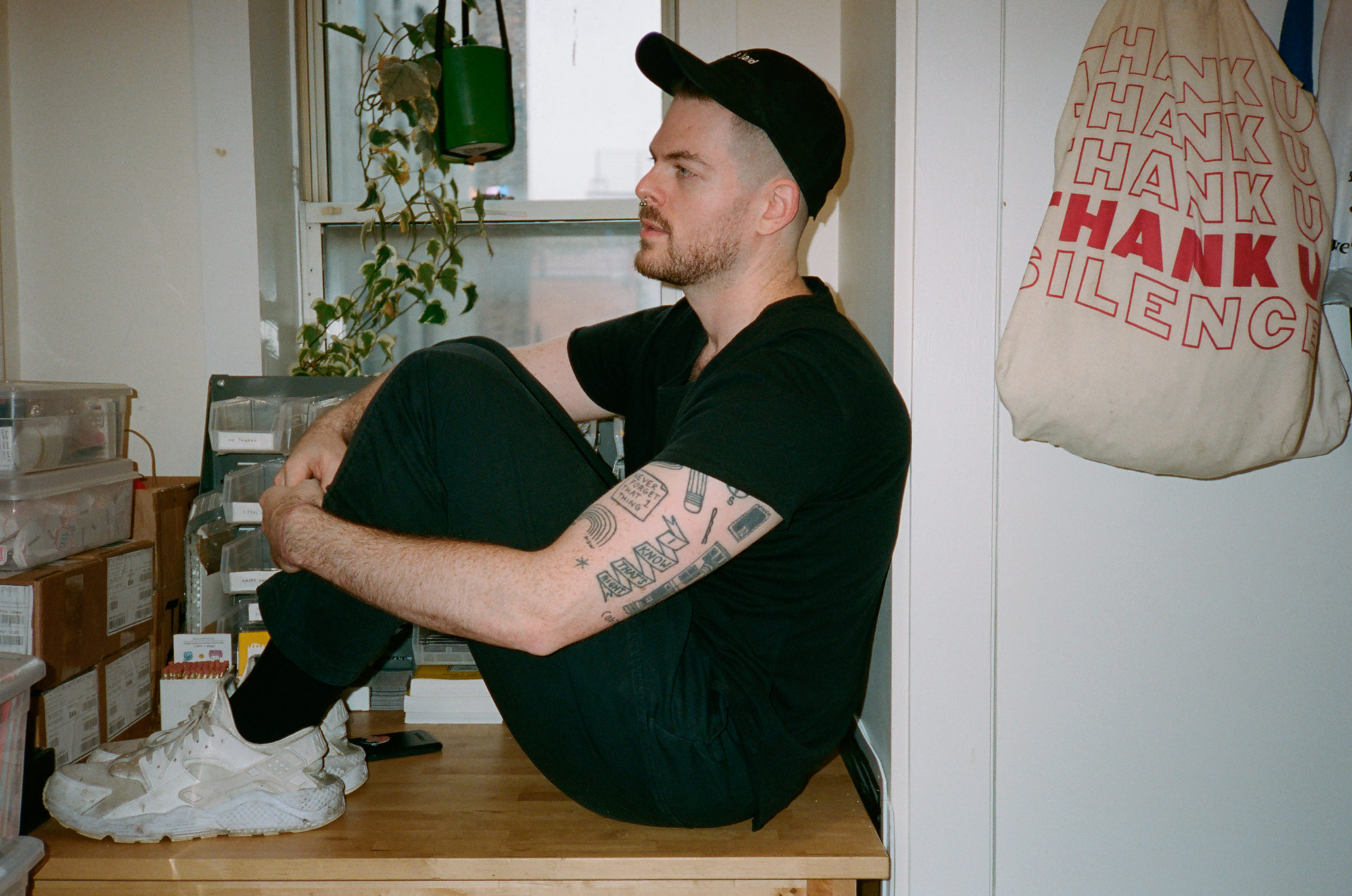
“I was a teenager, alone, on the internet. (laughing) I didn’t have a ton of friends…the internet was my place to connect and share and make things.”
How long ago did you move to New York? Six years ago.
What were you doing when you first moved here? I had been working remotely for an internet marketing firm, mostly hacking WordPress shit together. I had been coming up to NY a lot, because I had friends here. A friend of mine from Baltimore was moving to NY, and was like, “I need a roommate. You’re always there, why don’t you just move?” And I said, “Okay. That’s fine. Let’s do it.” I didn’t actually put much thought into it.
Eventually, I was replaced by better WordPress plugins, so I didn’t have a job for a while. I was unemployed for four months, and lived off of novelty t-shirts. I had this one that briefly went viral, and paid my rent.
Nice. It basically got me out of credit card debt. It was another one of those things-are-what-you-make-of-them moments, where a small joke accidentally fixed everything. And then I went to work at Barton F. Graf, an ad agency. I was there for a year and a half.
What was the t-shirt? I made this shirt with the Joy Division Unknown Pleasures album art, and it just says, “What is this? I’ve seen it on Tumblr.” I posted it as a Photoshop joke one night, and when I woke up the next morning it had 5,000 notes and re-blogs, and I had all these e-mails asking where to buy it. I was like, “Oh, I guess I need to make t-shirts.” I took preorders for a month or two. The first batch was 350 orders, and I was printing them myself.
It was amazing. This one, stupid t-shirt saved my ass—it really got me through that time. And, people still buy that shirt! Peter Saville, who designed the album cover, bought 12. I think that t-shirt is emblematic of what a lot of my work is about: super simple execution, with a surface-level joke, but there’s often much more going on. It was sort of like a precursor to where I’m at now. That, and a few other one-off projects that got me through, which built the basis for my career as an independent creative.
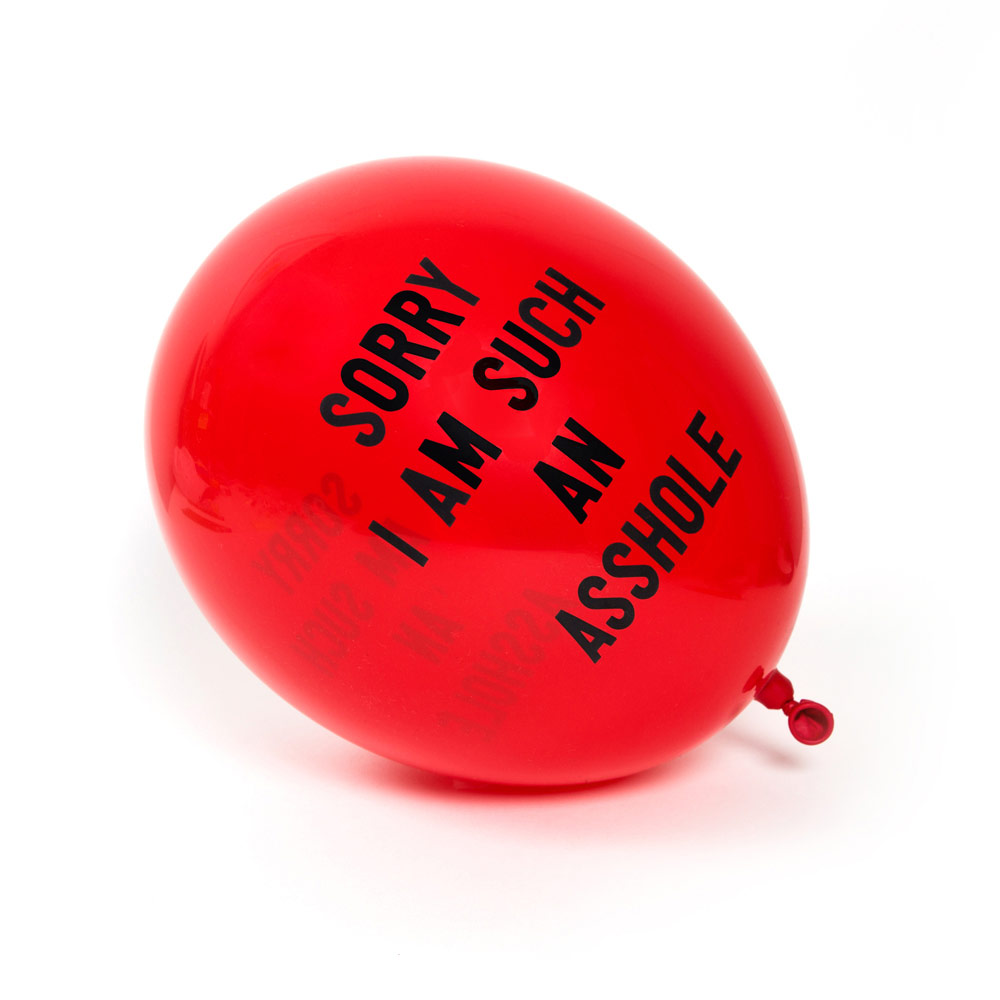
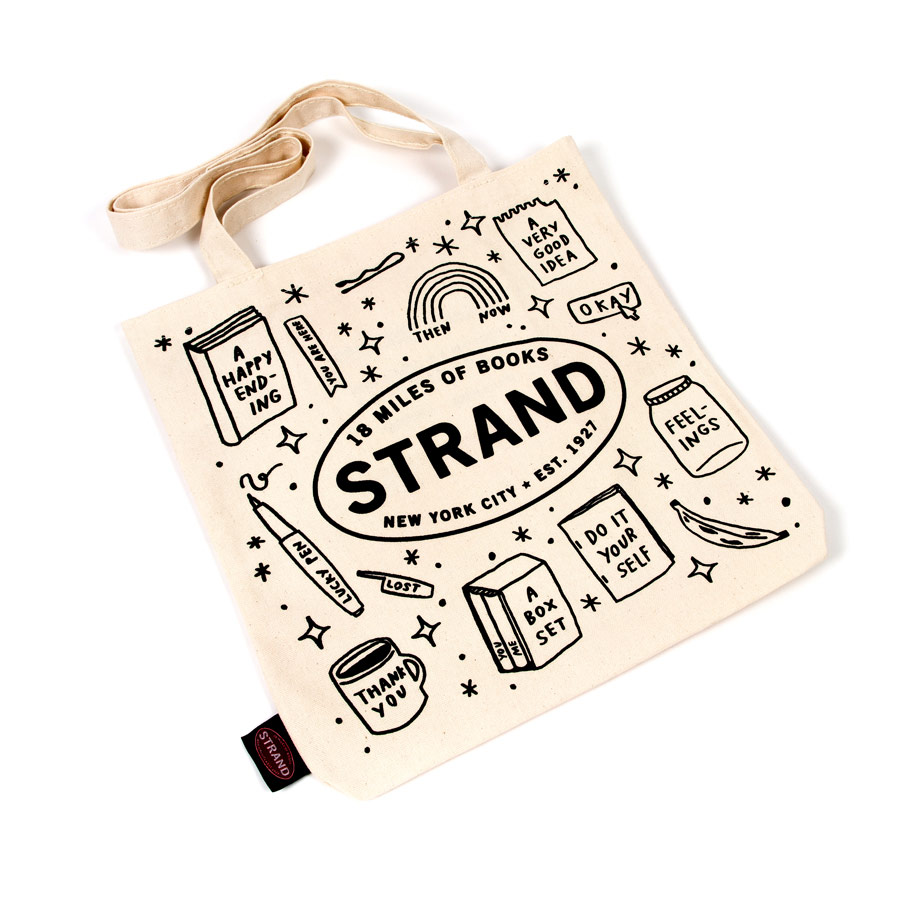
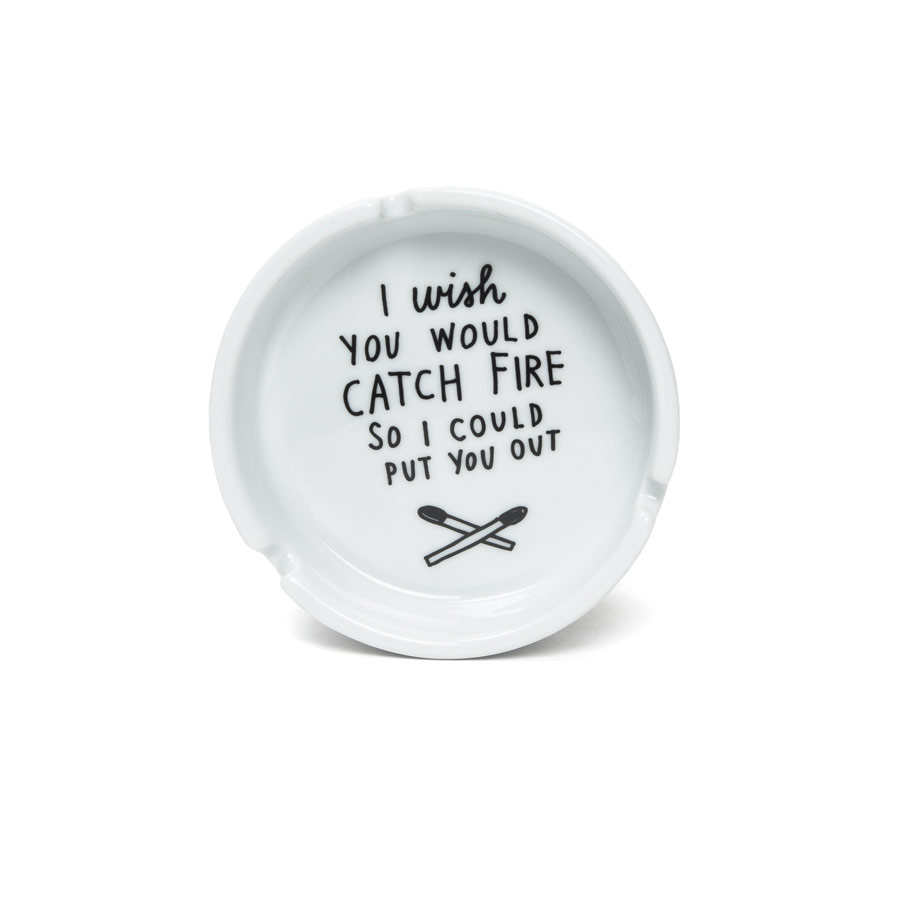
It seems like you’re well-equipped to act and respond—rather than sitting around laboring over things. When you get an idea, you throw it out there. When you’re your own boss, you get to decide when something’s done. When I have an idea, I don’t have to run it up through the ranks. At this point, I’d maybe be a senior designer, or a creative director if I was working for a really small studio. But I’m on my own, so there’s no chain of command. I can just make something, and share it. I’m able to react to something within minutes if I want, and sometimes I do.
When I was starting out, it was a lot of, “You like this t-shirt meme? Sure, I’ll print t-shirts,” or, “You like this balloon? Okay, I’ll print more balloons.” It’s always just been simple. I didn’t totally know what I was doing, and that was okay. I would think, This works, and it’s good enough. I’m not a perfectionist.
It takes a certain amount of confidence to sketch something and throw it out there without second guessing yourself. Do you think that comes from having done so much of that, from such a young age? It’s scary to release something that might not be perfect, but there’s a lot of stuff out there on the internet, and no one’s looking at any of it. So who cares? Literally, who fucking cares?
Less than 1/4 of your audience will ever see your less-than-perfect Instagram post, thanks to the algorithm. And of that 1/4 that does see it, the ones that don’t like it will just keep scrolling. The people who love your work may not even sign in that day. The reality is, nothing actually matters that much, and I think I’ve felt that for a long time.
I want to talk about your time at BuzzFeed, because it sounds like that may have impacted your decision to go out on your own, and do what you’re doing now. Yes, and no. It’s pretty easy to equate my success with the time I spent at BuzzFeed, because there are a lot of people who work there for a while and then leverage that to get where they’re at.
When the first book came out, I left advertising. I had been working a lot of overtime. I got called in on the weekends and took taxis home at 2am. That was my life. I worked crazy hours, and I didn’t know that I didn’t have to. So after the first book, I started working at BuzzFeed. It just seemed like it was a place to make fun stuff. It definitely wasn’t advertising. The team I was on was pretty flexible, and I was free to lay the foundation there for where I’m at now, with resources and people I could learn from. And I had my nights and weekends free again.
When I had sold through the concept of the second book, and my rough draft was coming due, I realized I needed more time to work on it. I was trying to get more unpaid time off at BuzzFeed, but they were like, “Okay, you seem a little too busy for us now.” And I said, “I think you’re right.” That’s a nice way to put it—I was fired from BuzzFeed, but I was also too busy for BuzzFeed. It’s been almost three years now, and I have been busy.
I have a certain level of confidence, but it took a second book deal for me to believe it was time to leave and give myself a chance. Sometimes, you just need a shove. I’ve had to throw myself off of a cliff a few times, and I think that’s normal. It can be really hard to do the thing we already know we should be doing.
“…there are so many moments where you’re presented with an opportunity, and you can either do something big, or something even bigger.”
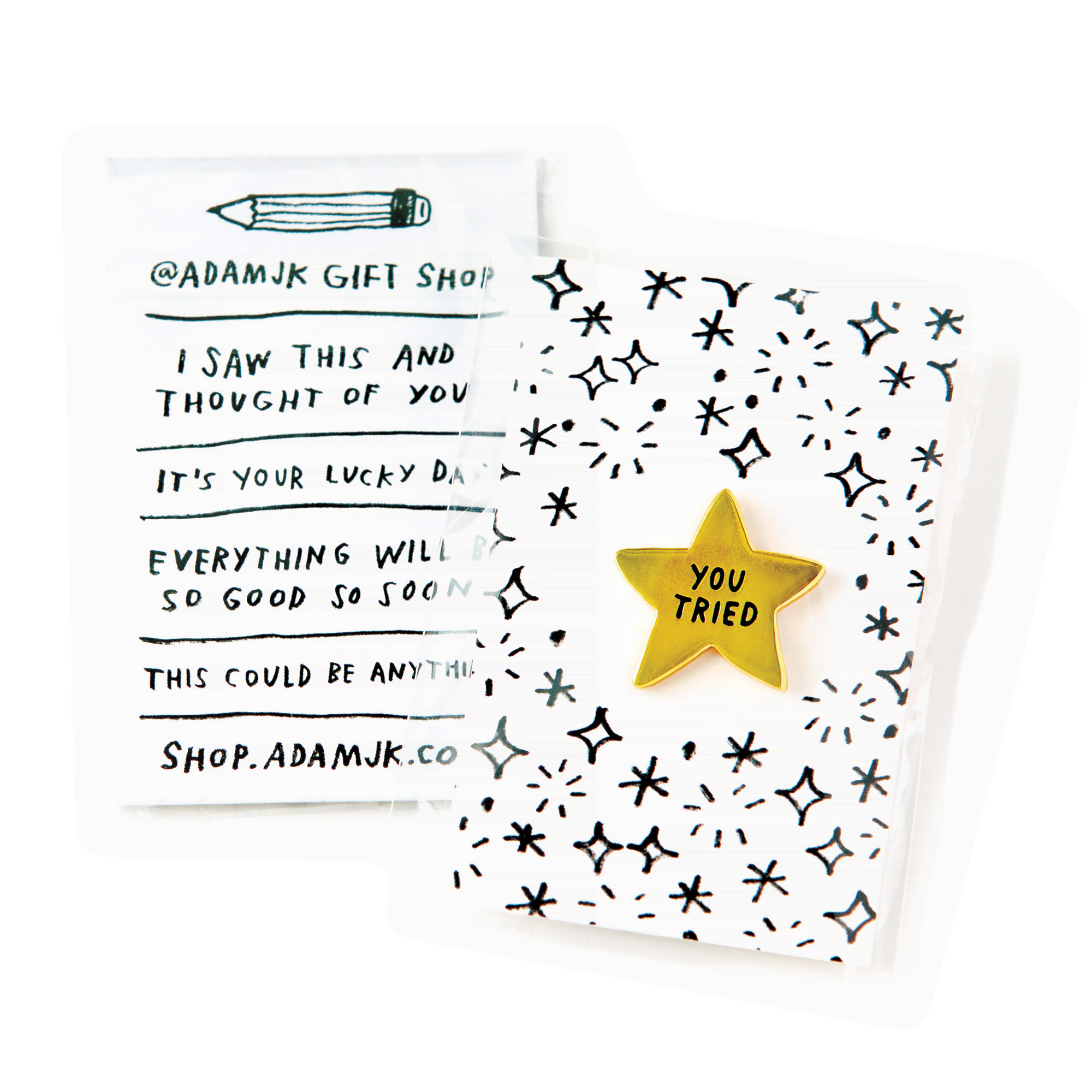
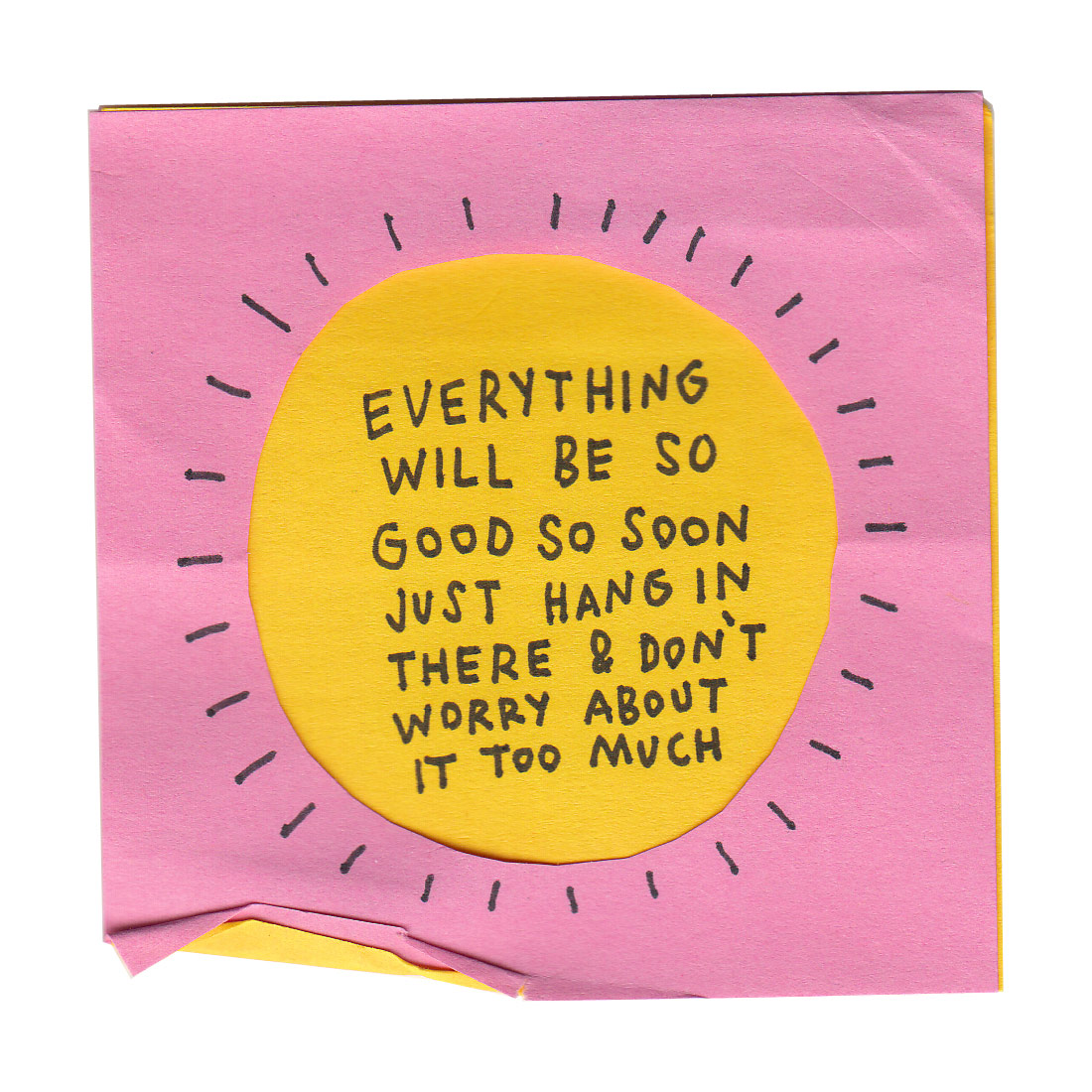
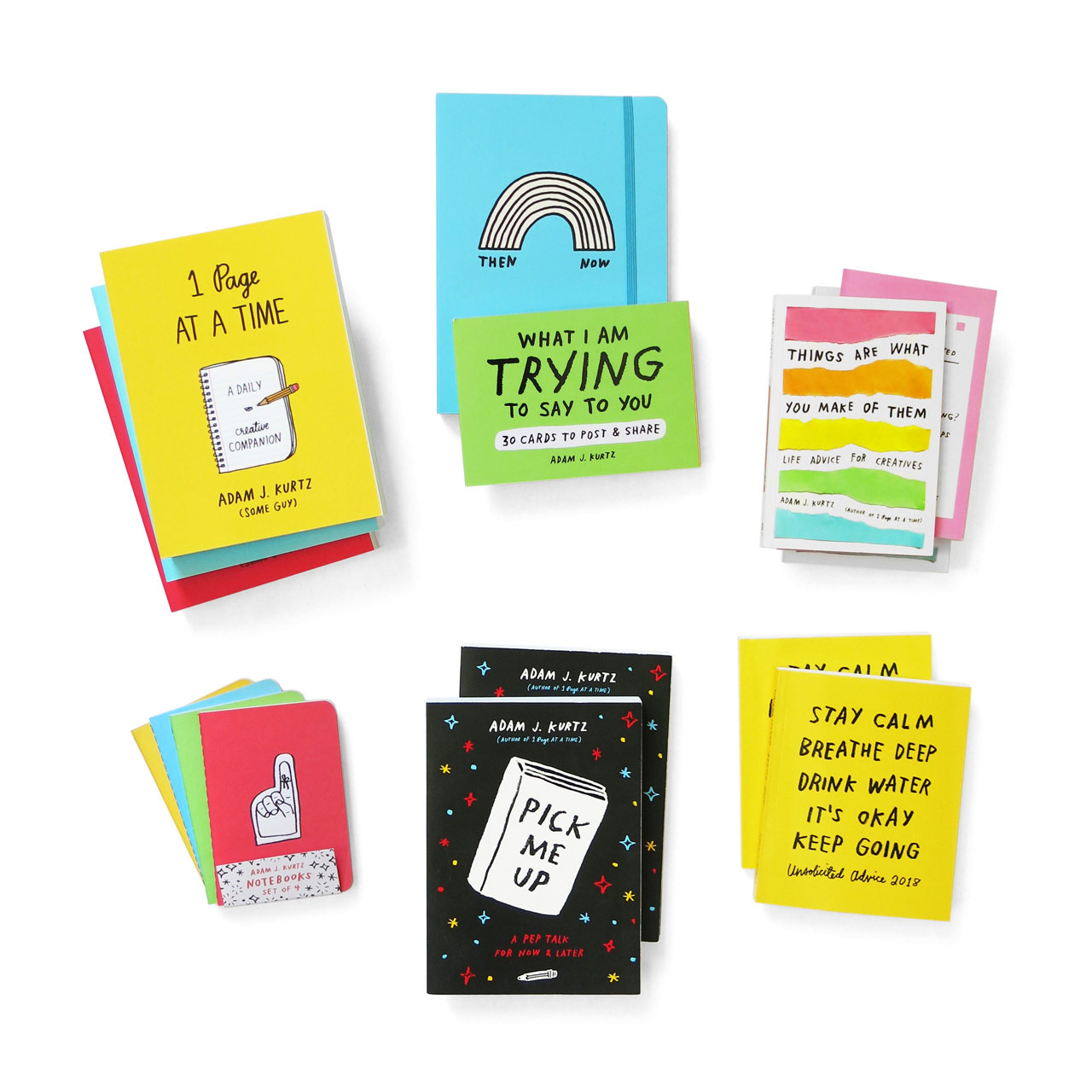
It’s easy to get caught up in it and to think, What if this doesn’t go the way it’s supposed to? What about insurance? Then again, you have to remember that nothing ever happens the way you think it should. So, nothing matters! Nothing matters is becoming kind of an accidental mantra. I actually comped out a keychain that says, “nothing matters” three days ago, which I didn’t remember until just now. (laughing) Nothing matters, and it’s extremely liberating! Things are only what we say they are. Things only carry as much weight as we give them. Do you need any more pull quotes? Because I’m just shitting aphorisms here.
(laughing) You have a really specific voice and aesthetic. Was there ever an “Aha!” moment leading up to this point, where you realized you were really good at that specific thing and were going to do it, or was it more of a constant evolution? Yeah, I’ve really settled into a thing, and I’m not comfortable with the fact that I’ve become the ‘handwriting man’ over the last year.
One “Aha!” moment was the beginnings of Things Are What You Make of Them, which is my handwritten essay collection. I didn’t think I would ever write a book. I had made journals before, but didn’t even think to write a book. I had been writing this column for Design*Sponge, and at a certain point I realized there was a book’s worth of words there. That column, and my relationship with Grace Bonney, was a great catalyst. I had written the first advice guide, Simple Tips for Success, which was meant to be a one-off. But then she reached out and said, “Do more of these! We’ll pay you.” And I said, “What? Okay!” For the first two or three, I was still at BuzzFeed. But I kept writing those columns, even as I was leaving and entering the world as an independent creative—navigating all of the fear and the business and collaboration stuff that goes along with that.
At a certain point, I thought, Holy shit! This is a book. And not only is it a book, it’s the book of my life. It’s so personal, and honest, and accurate. That could only have happened by writing it anecdotally over the course of several years. Had I just sat down to write the book at once, I don’t think it would have worked. It’s weird to think that I was writing a book that whole time, but didn’t even realize it until a lot later.
“When you’re your own boss, you get to decide when something’s done. I can just make something, and share it. I’m able to react to something within minutes if I want, and sometimes I do.”
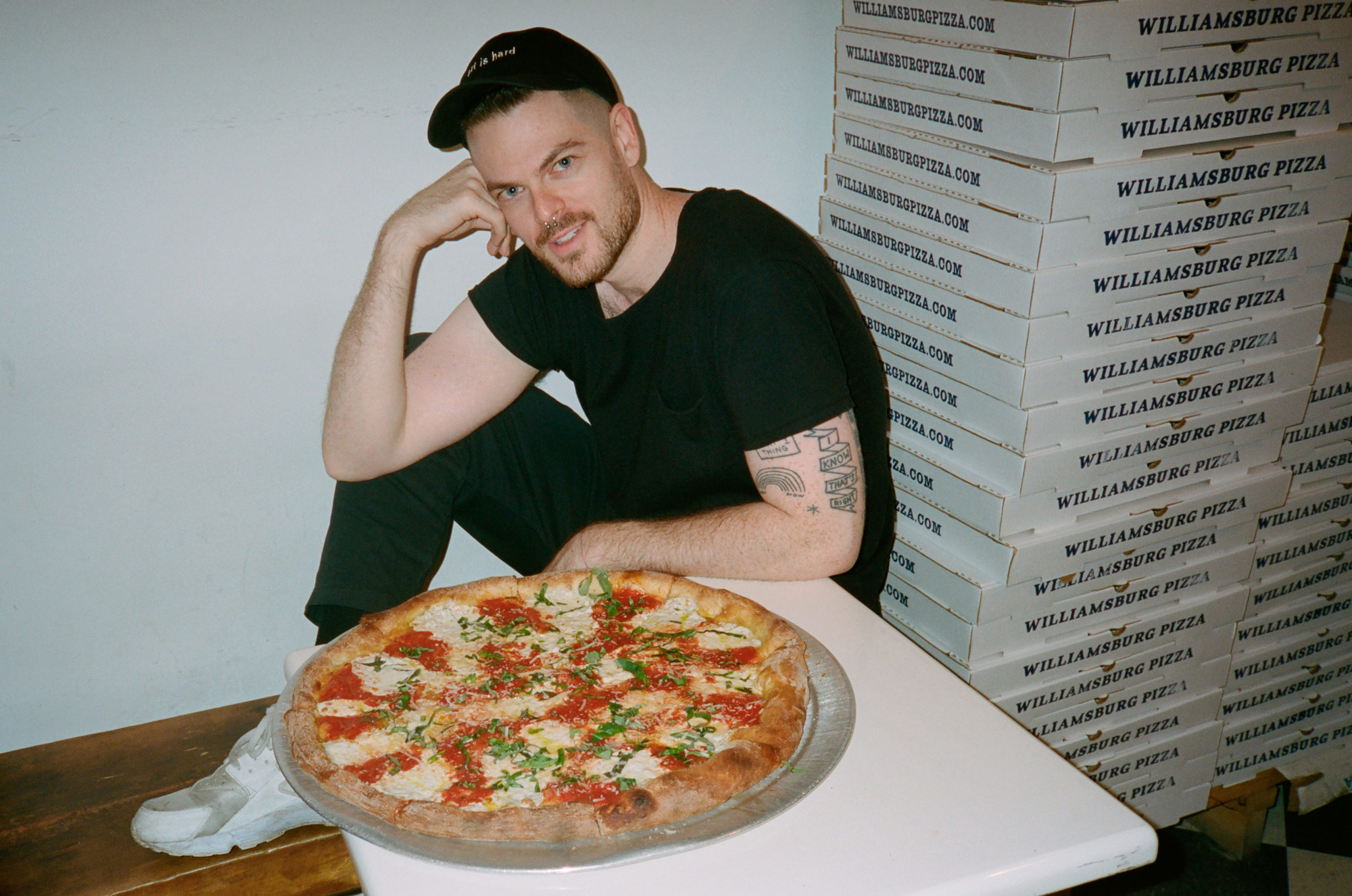
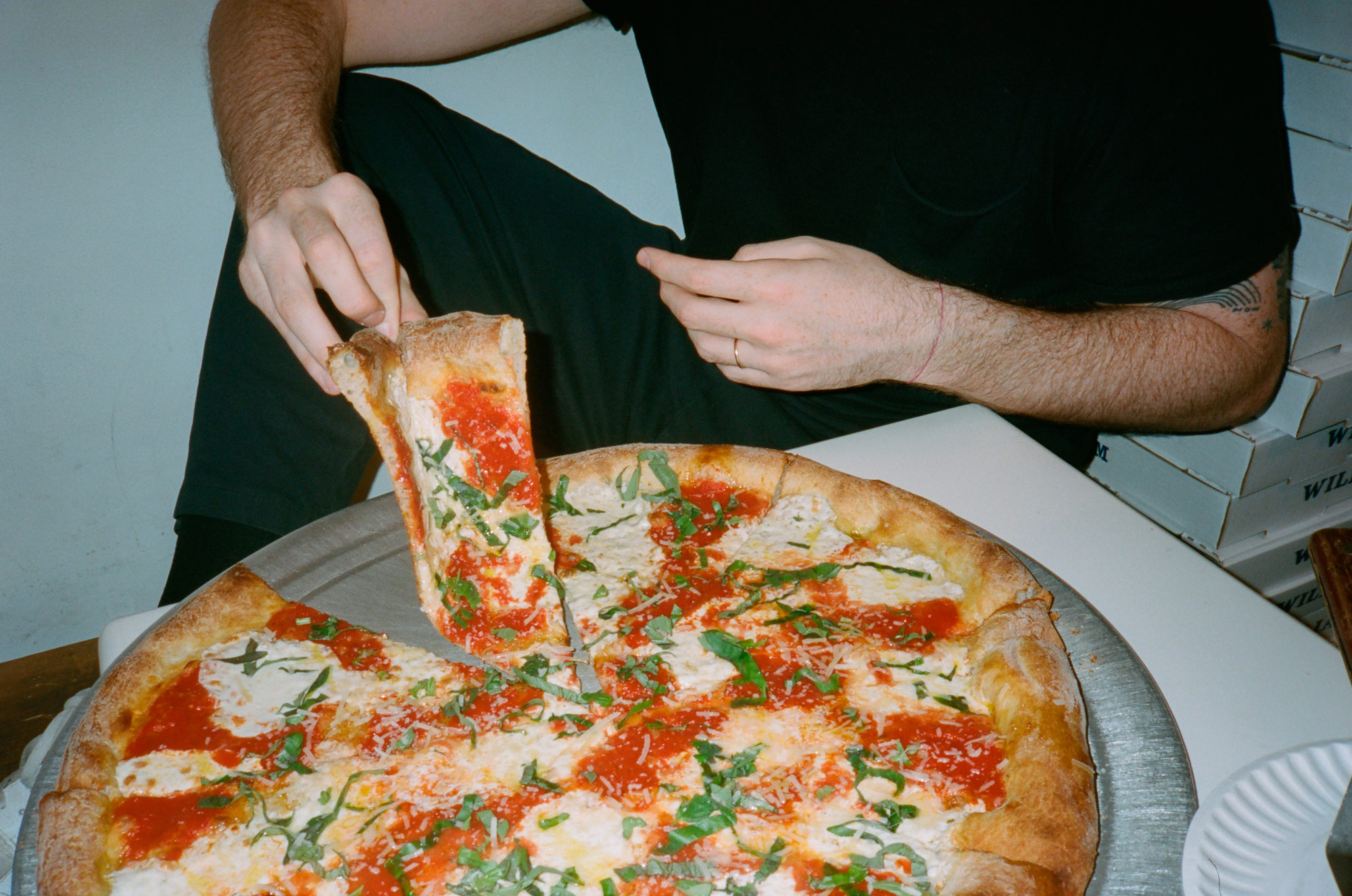
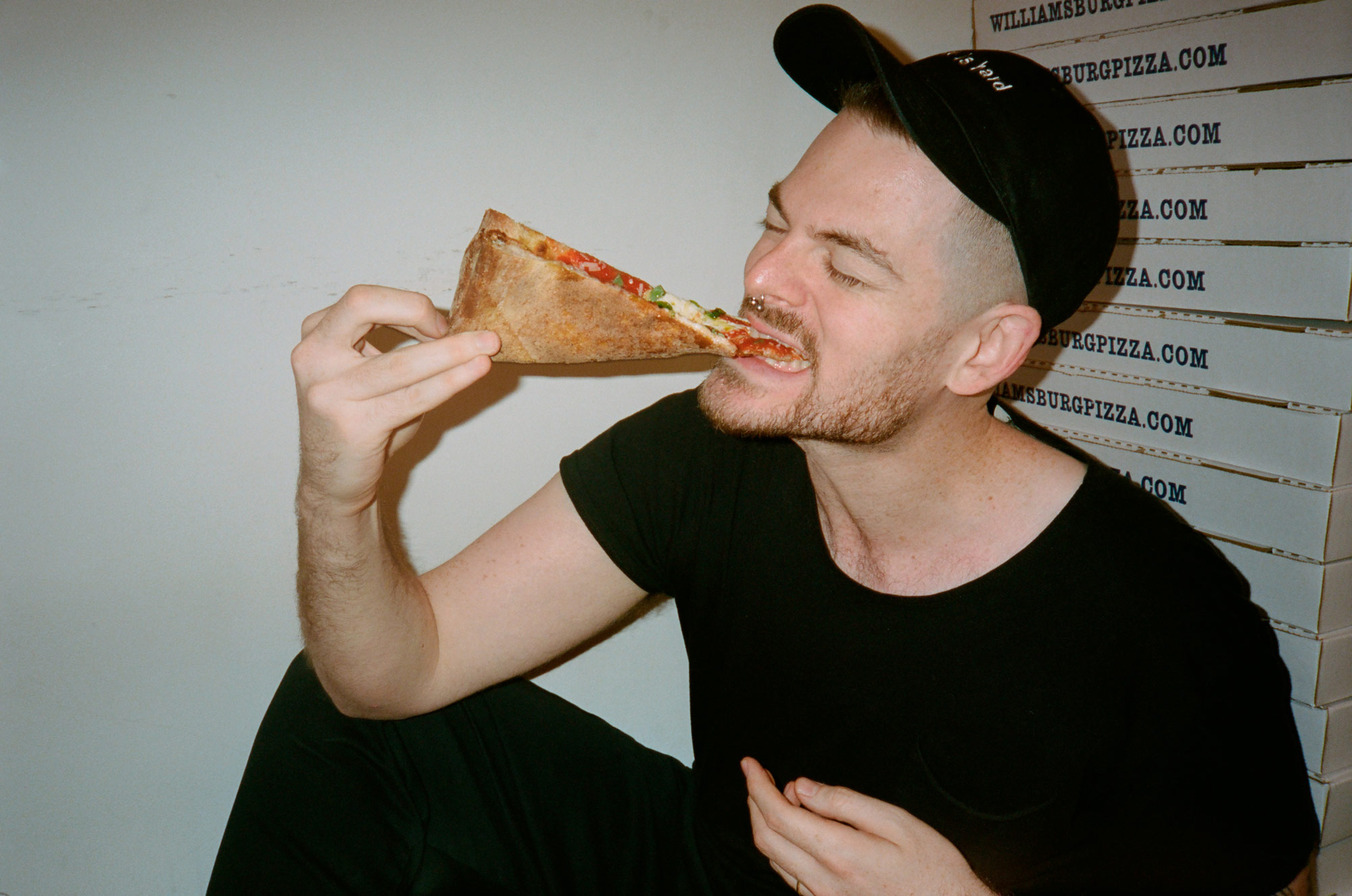
It’s almost like a cumulative “Aha!” moment. Yeah. I think other people knew. I think there have been a lot of things in my career that others knew before I did. My editor at Penguin has known for a long time, but I don’t think I really believed any of it until this year.
Would you consider the leap from a full-time job at BuzzFeed to going out on your own one of the biggest risks you’ve taken to move forward in the last three years? Or are there other risks that stand out to you? That didn’t really feel like a risk, because the separation was mutual. By the time BuzzFeed and I had our conscious uncoupling (laughing) I had sold another book, and I had to turn it in. I had other projects lining up pretty quickly, so it didn’t really feel that risky. I think it would have been more of a risk at the time to have kept a day job.
I don’t know that I’ve ever taken a huge risk, or a huge leap. Even moving to NY happened in this very chill way. Maybe I just got a lot of the drama out early in life. Or maybe I’m just so well-adjusted that my brain is protecting me from risk.
It seems like you’ve allowed the universe to guide you to a certain degree. I think these have all been educated choices. Knowing that life is difficult, and that you can’t control things, allows you to make informed, but also really open-ended, choices. The phrase “things are what you make of them,” comes up in my work all of the time, because it’s literally my guiding voice; both in my personal and professional life. It’s helped keep me going, but I think it’s also helped keep me safe. I have the personality type that can try to control everything. There are moments where I get caught up in trying to perfectly plan and arrange things, but I end up getting so fucking anxious that I can’t function.
I may need to take a cue from that. (laughing) Maybe just chillax more. (laughing)
It’s funny to have a conversation like this, because the questions you’re asking are the questions I’m asking myself right now, too. For the first time in my career, I don’t know what’s next. I’ve kind of known up until this point, and now I honestly don’t. I was supposed to pitch a new book almost a year ago, but I didn’t do it. I worked on a concept and prepared a pitch and went back and forth with my agent, but then I thought, I don’t believe in this yet. So, I just haven’t done it.
I think that’s the driving force behind my work. Even if it’s the simplest execution of pencil on paper, the intention matters, and the emotion matters. That’s what that magical intangible thing is. I don’t just shit out meme phrases. I’m never going to make “Fries Before Guys,” because I don’t believe in it.
Whether it’s humorous or dark, your work has real honesty in it. At what point in your career did you find you were able to so honestly express your own voice and vision with the creative community at large? I feel like I’ve always been doing that. And it’s not groundbreaking. People are always saying how vulnerable I am, and I think, Am I? The truth is, a lot of us are really vulnerable. In real-life conversations, or in a 2am tweet. I don’t think I’m any more honest or vulnerable than anyone else.
Maybe it’s the element of humor that not everyone has. I try to write the way I talk. I try not to overthink things, because when you sit down and overthink what you’re doing, it just ends up shitty, and you lose the humanness. It doesn’t have to be perfect, but it does need to be accurate. If you’re speaking your truth, it’s actually really easy to get it right. Because it’s true. You can’t really fuck up your own truth.
If you see 1 Page at a Time in a bookstore, you might think it’s a cute book for kids. Social media allows me to provide the context for my work, though. If you were to see it after following me on Instagram, that’s when it starts to feel more meaningful, or powerful, or even useful than what it might seem like at face value.
I know there are people out there in the design community who are thinking, What the fuck is Adam J. Kurtz? Why is this a thing? I don’t understand this; I have a pencil, too. But it’s not about any single page out of one of my books. Or any one iteration or execution of a thing. I’ve built this larger vibe or mood where I can say something really cheesy—that on its own may sound like crap—but within the context of who I am, you’ll know I mean it, and it’s probably based on a true story.
Are you creatively satisfied? No. I don’t think I’m satisfied at all. The day I feel satisfied, is the day I die. I don’t think satisfaction really exists. And that’s beautiful, because I don’t really want it to. Right now, in particular, I don’t know what’s next, so I’m extra unsatisfied. (laughing)
Is there a point in your career—5 years from now, or maybe 10—that you know you eventually want to get to? I think I’ve got the next five years, but that’s about as far as any of us can have. It would be one thing if I was on some sort of career track—like if I had gone to med school, or another path with known benchmarks. But the reality is, creative careers vary. The thing I’m doing right now is sort of its own thing. I’m not rising the ranks in the ad world, as an award-winning art director-turned-creative-director-turned-executive-director. I’m not following that path.
What I’m doing seems to be reaching its peak popularity, and I’m seeing a lot of other people doing stuff that’s really close. I’m lucky that it’s on-trend—that’s great for me right now—but I also know this whole thing is going to be over really soon. I’ll be a quirky, sarcastic, gay dude my entire life. But will that be a job for a long time? Probably not. It’s a bubble that’s going to burst, and I’ve accepted that. So, I’m going to keep evolving and growing and doing the things I want to do, but I also fully understand that this is a weird thing, and I’m lucky to get to do it, or that anyone buys anything, ever. I don’t take anything for granted.
You’ve been doing this for a long time now. Is there any advice you’d give to someone who’s just starting out? In 2007/2008 when I was in school studying design, this goofy, bubble-letter, hand-drawn type was the thing, and I got really into it. I thought, This is cool. I’ll do that, too. That’s our impulse when we’re in school; to replicate the thing we admire. But part of being a creative person is figuring out what comes next. So I think the best advice I have is to just be yourself. I know that’s the fucking worst, so just hear me out: go through the phase where you love doing exactly the thing you’ve already seen, go to the Urban Outfitters website and replicate their design aesthetic, and once you’ve gotten that out of your system, then go figure out what your thing is. Focus in on your authentic self.
It’s weird to see young people right now doing work that’s a lot like mine. I’ve gone to art schools and seen work on the wall that looks like mine, and I just want to say, “First of all, you can’t get an A for effort if you execute in 30 seconds. Second, it’s not worth doing that.” I get that there’s a need to emulate what you like or think seems cool. People do that when they date, too. (laughing) Is any of this even helpful?
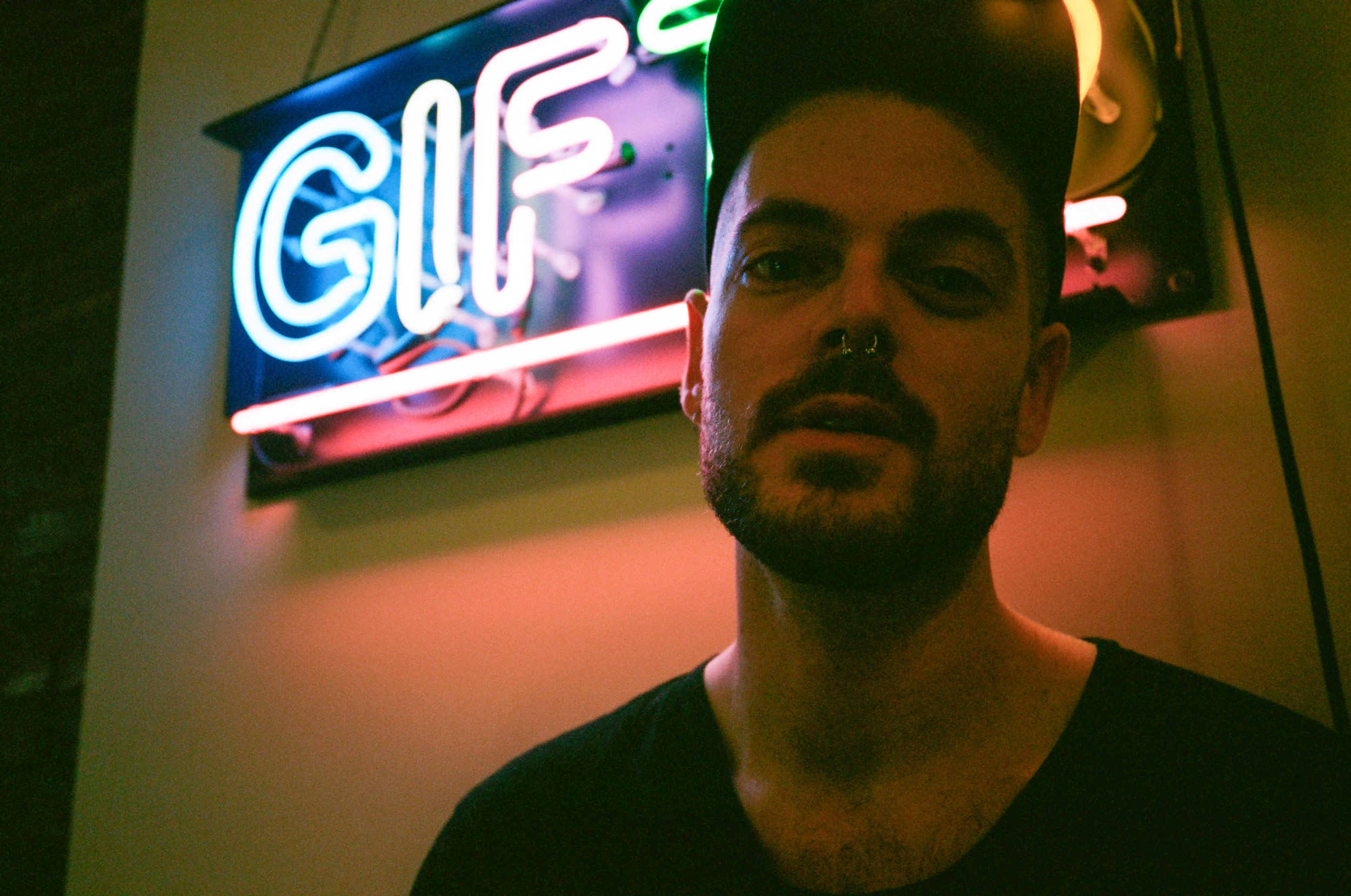
“You get what you ask for, and what you make of things. My whole career has been just that; making the most with what I have, and always trying to make more.”
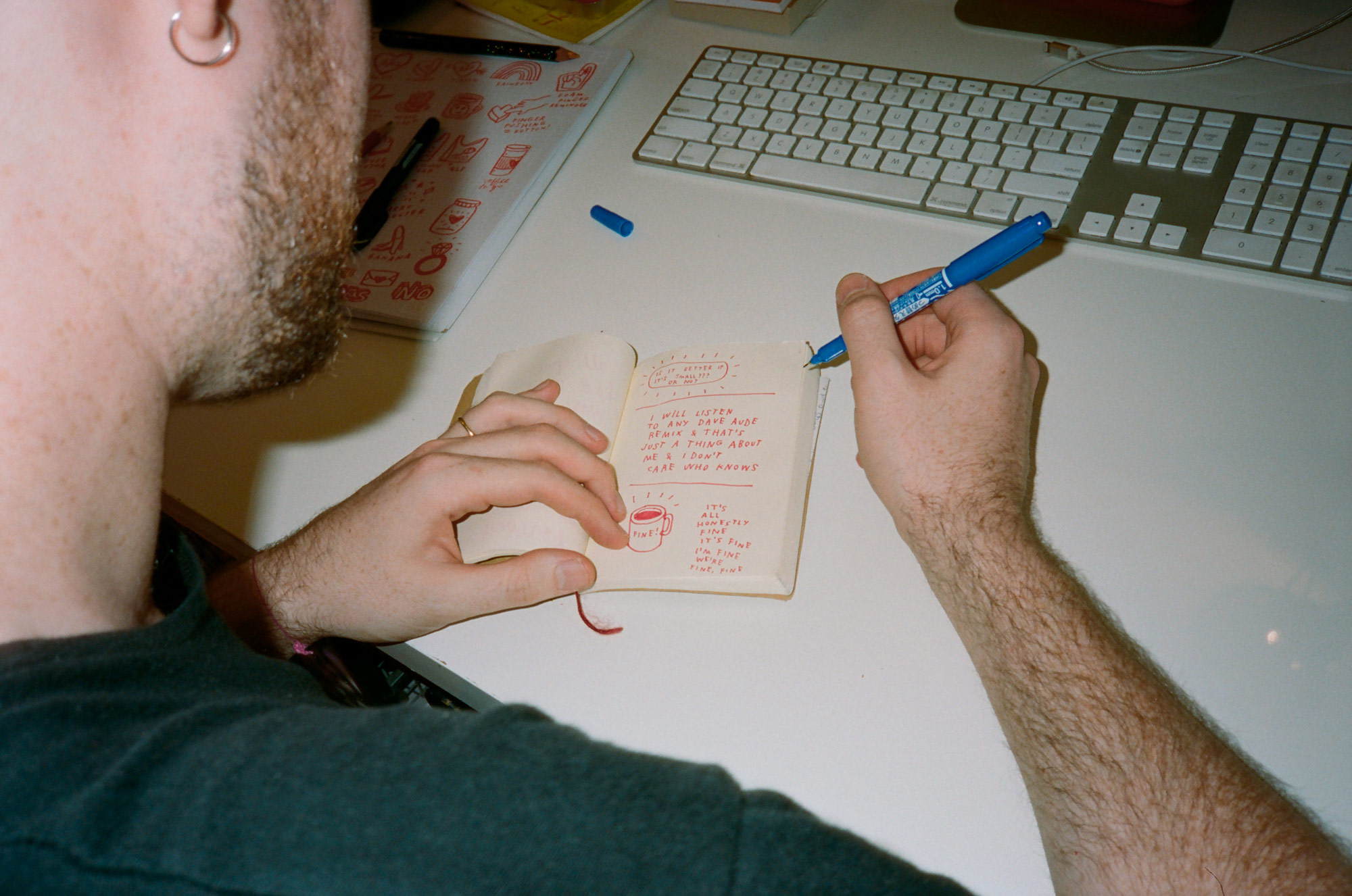
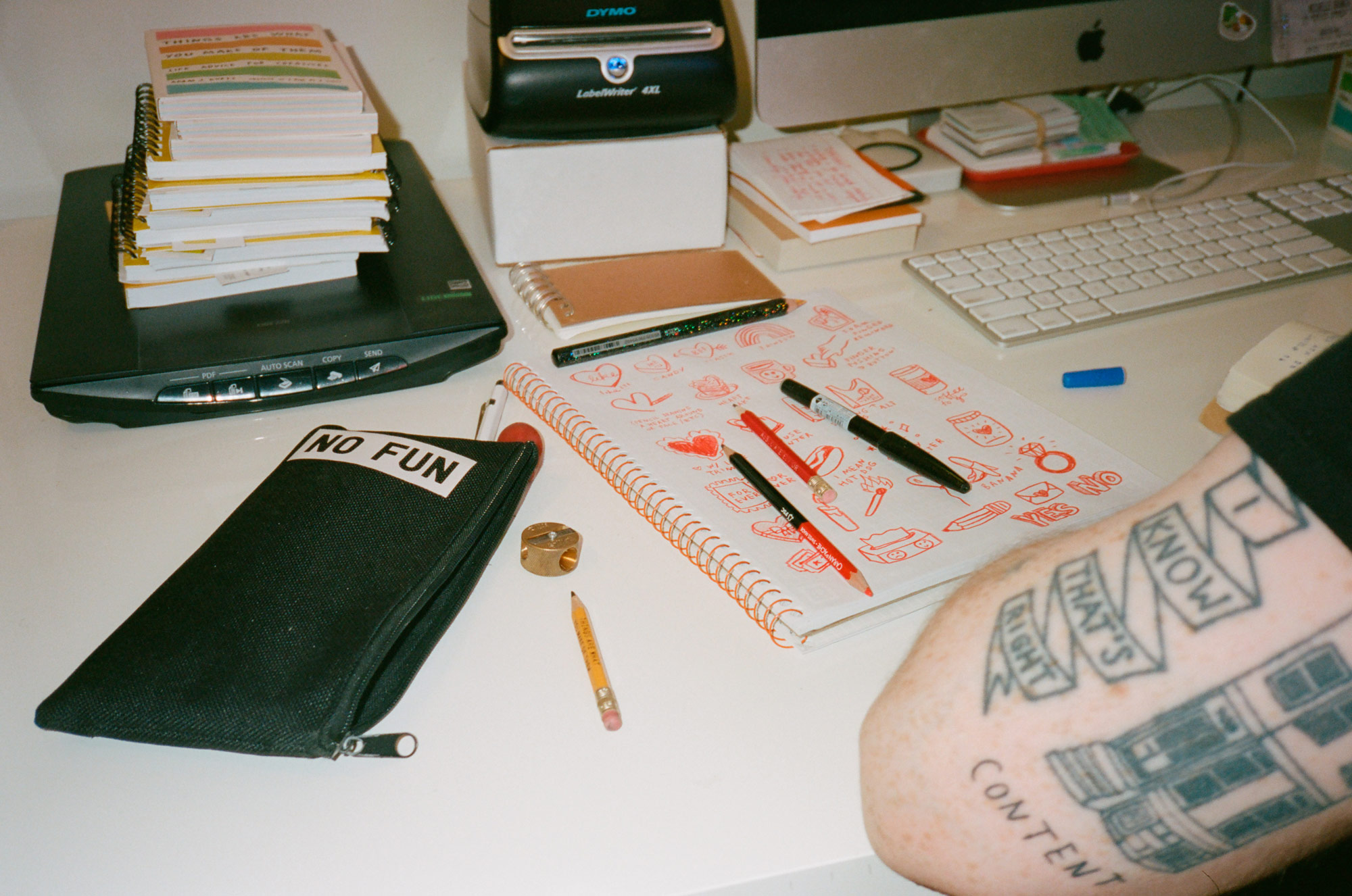
It is. I think that’s partly how you find yourself, especially when you’re just starting out. You emulate who you look up to, but hopefully eventually evolve enough to find and create your own style. It’s human nature. You’re actually reminding me of some other advice, though, that’s not related to this at all. My best advice for creatives actually is: don’t brand yourself into a corner. Don’t use your first name / last name / designs.com as your website URL. Creative professions overlap and shift so rapidly. We leave school thinking we have to have our whole lives figured out, but you don’t. Just use your name.com and that’s it. Otherwise, you’ll brand yourself into a corner and take yourself out of the running for any number of jobs and opportunities that come your way.
Advice like that belongs in a book. Oh my god, is that in my book? Wait, no. It’s not.
Speaking of your books—how often do you follow your own advice? Constantly. It’s so weird, because I’ll be having a really bad day and then see my own encouraging fridge magnet, and feel better. The first time that happened to me, I was shaken up. I was having a meltdown, and I saw my own postcard, and though, Oh my god! That’s good advice. I had this epiphany that I felt I had made something good, but it probably just said something like, “Smile.”
A lot of what I’m making are just tools for myself. The whole thing is actually me talking to myself, and then opening it up for interpretation by others. I recognize that I’m not like every other person in the world. But, if I’m thinking about a certain thing, or if I’m worried about a certain thing, maybe 5–10% of the population will have a similar thought process, too. And those are the people that I can help. I get them, and they get me. 1 Page at a Time is just a bunch of thinly veiled art therapy techniques that I needed. Pick Me Up was even less subtle, because I was going through even more shit. I’ve never made anything that didn’t feel useful, or good to me. There have been opportunities to make the kind of work, but I haven’t done that. So yes, I take my own advice, and I don’t make anything I don’t like. That’s why all my t-shirts are black. (laughing) I can’t launch an apparel store, because I hate wearing color.
Like any good New Yorker. Yeah!
“It’s scary to release something that might not be perfect, but there’s a lot of stuff out there on the internet, and no one’s looking at any of it. So who cares? Literally, who fucking cares?”
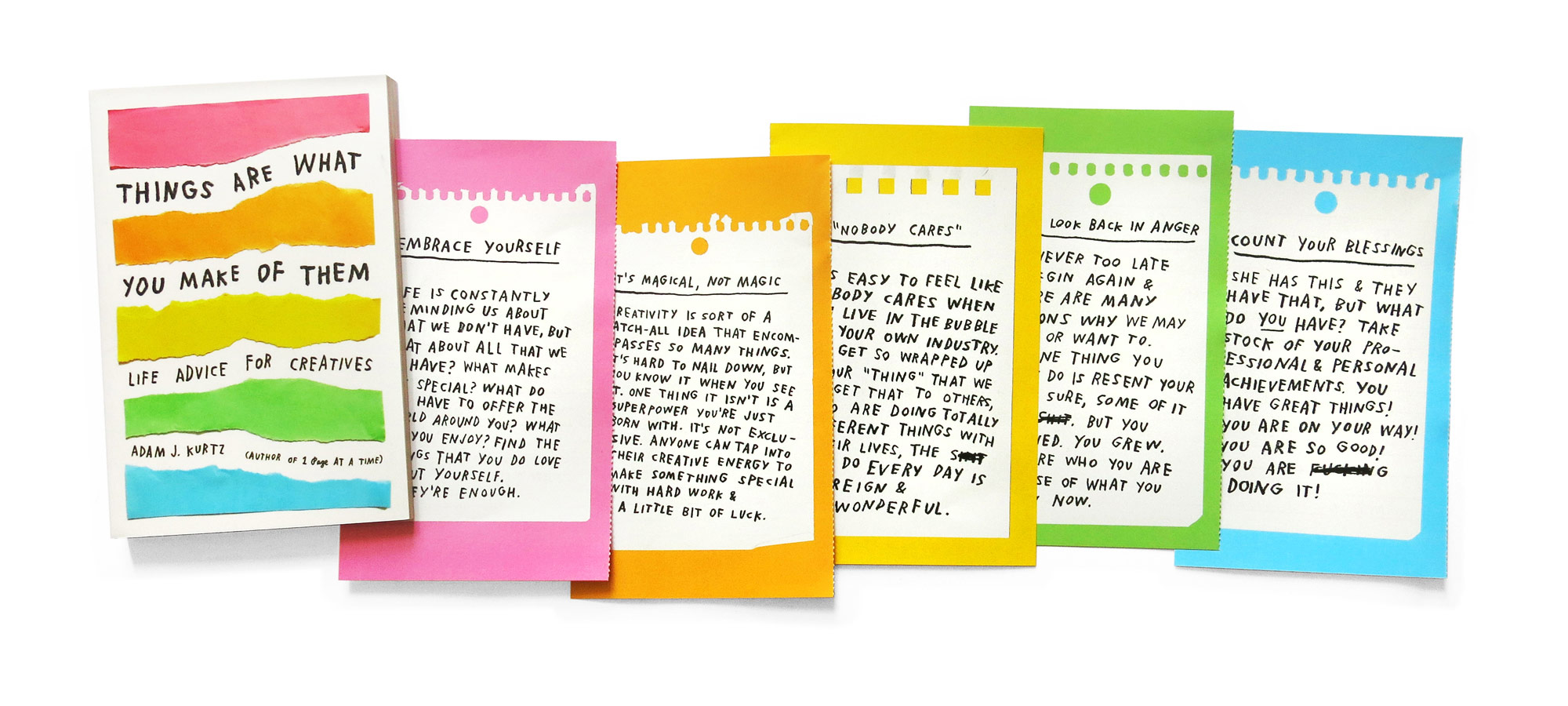
With the type of work you do, you could work anywhere. Do you feel like New York—or Brooklyn—influences your creativity? No. New York doesn’t influence my work. New York does make it easier to meet people that inspire me—not because everyone lives in New York, but because everyone visits New York. It’s a destination city, and artists I admire from all over the world come through, which makes it easy to just email them and ask if they want to meet up.
I don’t think you need to move to New York to make it. I didn’t get a book deal because I lived here, and my work has nothing to do with New York. I think people talk about it now because there’s this perception of it being cool—which it sometimes is, but sometimes isn’t. I noticed that when they market my books overseas, they say I live in Brooklyn, instead of New York. It’s like the more times you say, “Brooklyn” the more exciting I’m supposed to sound. I hate that there are probably teenagers thinking, Well, I’ll never succeed because I can’t go to New York! I want to say to them, “I work from a spare bedroom and I’m a fucking loser.” (laughing) I could be doing this anywhere. The internet! You can do anything with the internet.
Being able to meet people when they come through New York is one way to stay connected, but you also seem pretty active in the community here. I don’t think I’m that active.
I always see you around! I try to get out, but sometimes I’m pretty reclusive. I feel bad about that.
I also mean “community” in the sense of supporting and promoting other people’s work. That’s true.
“Sometimes, you just need a shove. I’ve had to throw myself off of a cliff a few times, and I think that’s normal. It can be really hard to do the thing we already know we should be doing.”
I want to talk about that for a minute; how you support others in your community, especially when it comes to intellectual property and the ongoing problem of people stealing creative work. You created the site shoparttheft.com to speak out about that, and to support people in the community, like Tuesday Bassen. I had known Zara was selling some version of my shit, and I didn’t say anything. When you’re a creative person who shares work online, you get ripped off. It’s just a fact. And I’d been ripped off many times; by big companies and small companies, by someone on Etsy just slapping my artwork on a t-shirt. shoparttheft.com was a reaction to a whole group of related infringement cases against Zara, where a bunch of artists all in one season ended up having their work ripped off and sold on Zara products. When it’s just my work, that’s one thing, but some of those artists are friends of mine. So when Zara responded the way they did to Tuesday, I was like, “Fuck this! You can’t come after my friends.”
I pulled some media resources together, and made it really easy for people to let everyone know this was happening. Because when you put it all together like that, it’s undeniable. On the heels of Zara’s misinformed response to Tuesday, it was really easy to be like, “This happened, and here it is. By the way, here we are! The artists.” The site encourages people to think about where art comes from, and to give them the chance to choose to support the creators themselves. It was another things-are-what-you-make-of-them moment; using the situation as an opportunity to make sure something happened. We got press from all over the world; not just internet media, but major newspapers and outlets like the BBC and Sydney Morning Herald.
There’s real power in a group of artists coming together like that. No brand wants 20 really cool, influential people talking shit about them to the media. That’s just it. How are they going to steal from a popular contemporary artist like Tuesday, and think people aren’t going to notice? It’s nonsense.
I think it was just business as usual for Zara, because the fast fashion model is to replicate what’s hot, and sell it at an affordable price point. But it was also a lack of thought, and a lack of caring. Pins and patches are illustrated work, which is something you can file a copyright over, so it’s much easier to trace and build a legal case around. Zara is the largest fashion retailer in the world; it would have been so much cheaper for them to just hire us to make that shit.
“I’ll be a quirky, sarcastic, gay dude my entire life. But will that be a job for a long time? Probably not. It’s a bubble that’s going to burst, and I’ve accepted that.”
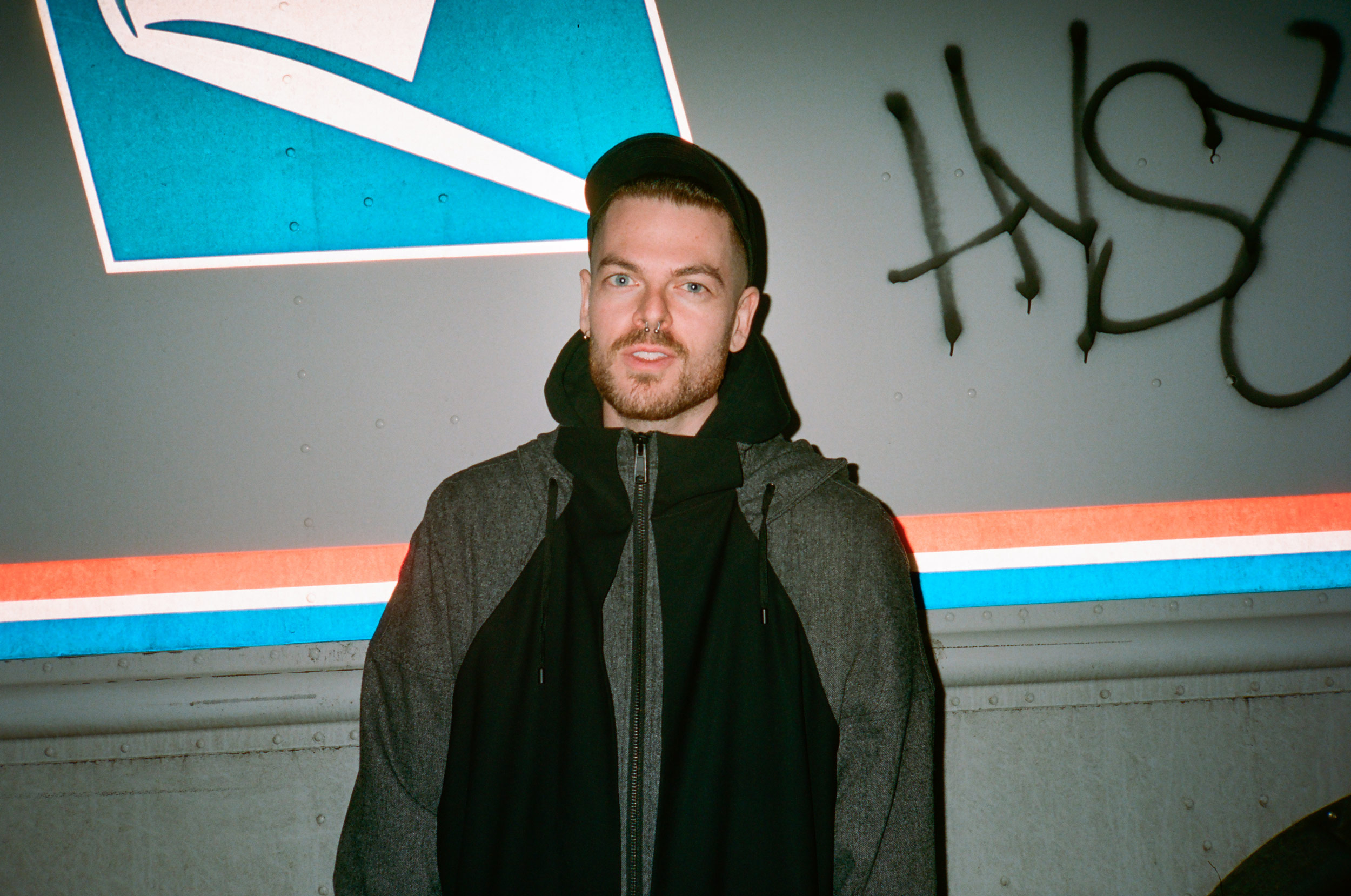
Which would have also been a great collaboration, and exposed even more people to the brand. That’s what brand partnerships are all about; tapping into another audience, with mutually beneficial crossover. I can’t imagine why they wouldn’t just collaborate with us, but they didn’t. So now, when you Google “past Zara controversies,” our group comes up in the search results, and we get name dropped in every subsequent case. We’re part of the narrative of that company now, and I’m proud of that.
Switching gears here for a minute to talk about something a bit more personal, because you got married recently … I did! I got married, and I can’t stop talking about it.
Mitchell is also a creative. What’s it like to be in a relationship with another artist? Mitchell and I are so different in what we do, that it’s not really a collaborative process, and it doesn’t feel competitive in any way. He’s a journalist, and so great at reporting stories and researching personal profiles, which is nothing at all like what I do. It’s nice to live and work and love alongside someone who gets what you do, but isn’t in that field. I think that’s healthy. I can’t imagine being in a relationship with another graphic designer.
I have my work space, but it’s not like the Adam JK show here. And conversely, it’s not the Mitchell Kuga museum. We keep our spaces tidy, and give each other the freedom to do what we need to do. There are days when I make myself scarce, so he can get to work. But when one of us needs an objective opinion, we’re also right there for that. I’ll proofread his work, and ask questions or make notes. We’ll bounce concepts around, and I’ll ask him for visual feedback. We wholeheartedly support each other, which is really nice.
What does a typical day look like for you guys, being that you share the same space? I wake up before Mitchell most of the time. Our apartment is relatively small, so I’ll brush my teeth and then just disappear into the studio with headphones on, and try to keep quiet while I write e-mails and get the day started. I know he’s awake when either he likes an Instagram post, or I hear the theme song from The Daily podcast starting. (laughing) Then I know I can start making noise, like brewing coffee and that sort of thing.
Most days I’m in the studio—emailing, and working through executions. I try to keep a pretty healthy work schedule. Other days—like when I have meetings and errands—are a little busier, but I usually try to line everything up in one day. I’m really happy not to take the train more than I need to. I have a lot of trouble drawing at home, though. So, if I have to be pencil to paper for long periods of time, I’ll leave and try to find other places to work for a while.
What kind of legacy would you like to leave? I don’t think that I’m relevant enough to have a legacy. I don’t think I’m important, or that I’m ever going to be hugely impactful. I like what I do, but do I think I’m one of the great artists of our time? No. I just believe in what I make, and I’m lucky to get to make it. The whole point of being alive is to have a nice time, to be a good person, and to help other people do the same thing. So, if I can positively impact someone else’s life by being open about the tools and coping mechanisms that have helped me, then that’s the legacy. People die, but the little trails and lessons they leave behind don’t.
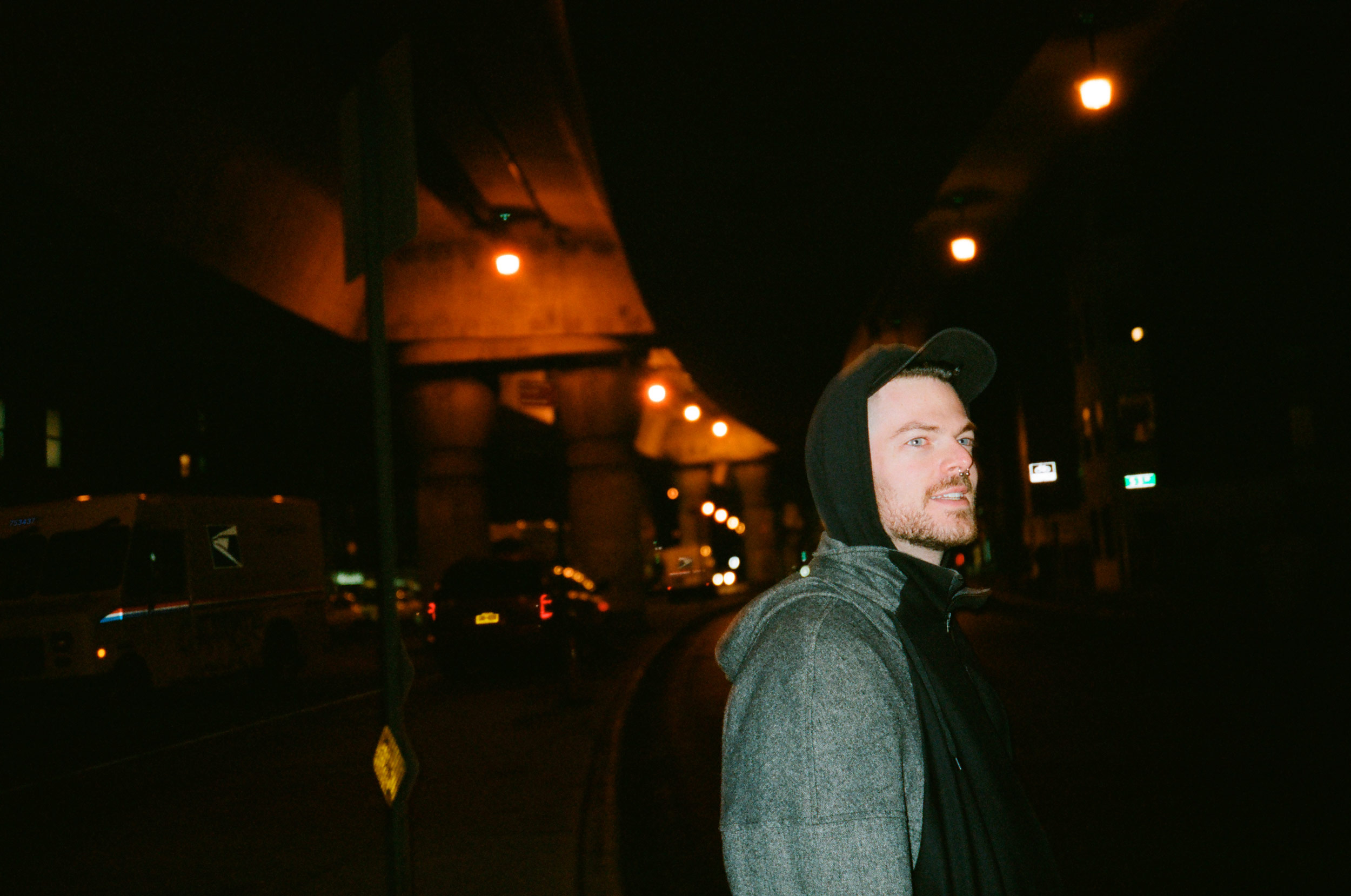
“Things are only what we say they are. Things only carry as much weight as we give them. Do you need any more pull quotes? Because I’m just shitting aphorisms here.”